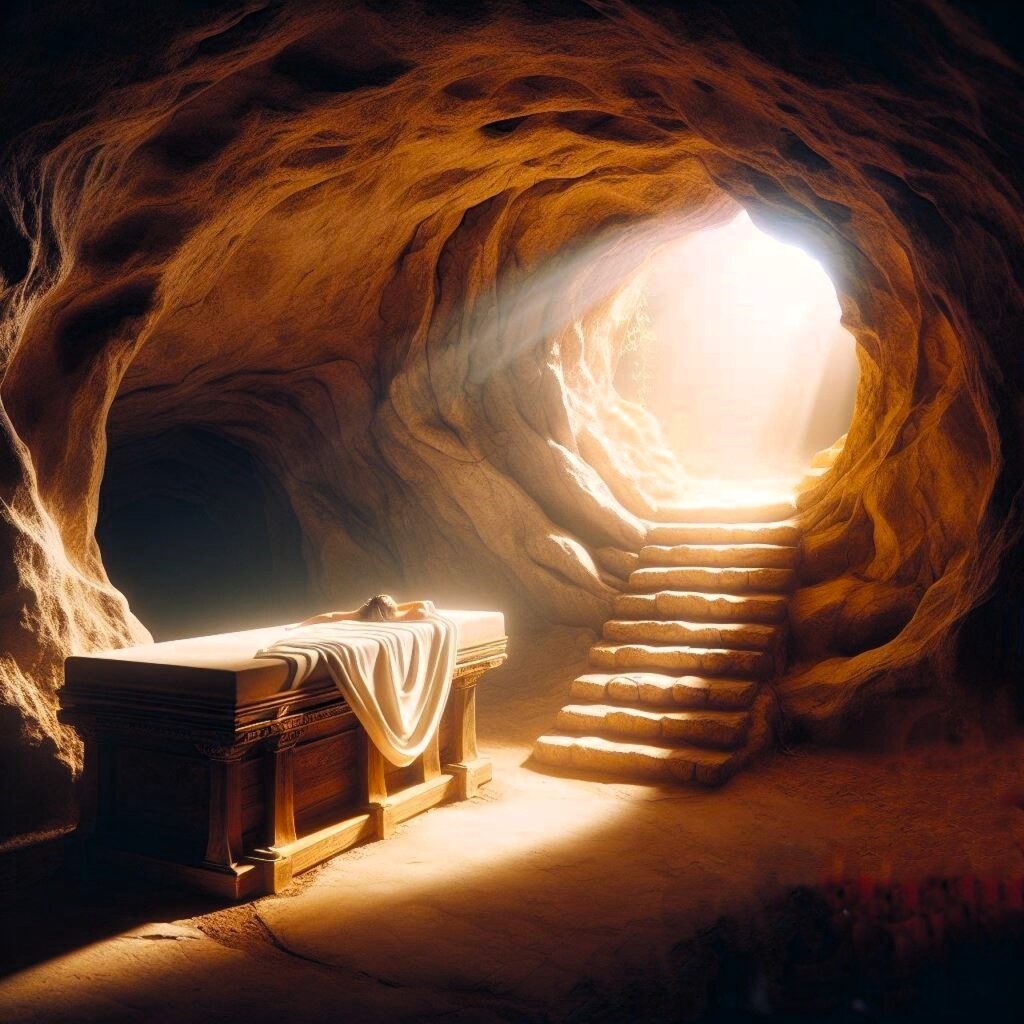Those who reject the resurrection almost always explain either the disciples’ coming to believe in the resurrection or the actuality of Jesus’s postmortem appearances as hallucinations. Denying that the disciples—including James and Paul—had experiences they took to be the resurrected Jesus appearing to them is practically difficult without any justification. This theory holds that these encounters were just misperceptions. If such is the case, this will help explain the disciples’ coming to accept and preach the resurrection narrative and the handy that Jesus seemed to them alive after death.[1] However, the hallucination theory is somewhat troubling, as the widespread attribution of the disciples’ experiences of the risen Jesus to hallucination to explain the resurrection account lacks a moral basis. Despite its appeal, the hallucination theory fails to explain the disciples’ unwavering testimonies and the subsequent spread of the resurrection narrative.
Defense Against This Theory
Since Jesus appeared to over 500 people after his death, it is hard to believe that all of these people had a hallucination, and one clinical psychologist, Gary Sibcy, says., “I have surveyed the professional literature … written by psychologists, psychiatrists, and other relevant healthcare professionals during the past two decades and have yet to find a single documented case of group hallucinations, that is, an event for which more than one person purportedly shared in a visual or other sensory perception where there was no external referent,” Stated differently, people—not groups, far less groups of five hundred or more! —experience specific hallucinations![2]
The large number of witnesses to Christ’s post-resurrection appearances calls into question the idea that they were simply hallucinations, which are generally private and subjective. These encounters were witnessed by Mary Magdalene, the disciples, Thomas, the two disciples at Emmaus, fishermen on the shore, James, and even a group of five hundred people (1 Corinthians 15:3-8)[3]. Paul’s assertion that most of the five hundred witnesses were still living at the time encourages verification of the events (1 Corinthians 15:6), offering a level of public scrutiny that would have been difficult to fake. The witnesses, described as simple, honest, and moral, all saw Christ at the same time and location for forty days, which defies ordinary hallucinogenic experiences (Acts 1:3).
Christ’s post-resurrection interactions included eating (Luke 24:42-43; John 21:1-14), speaking (Luke 24:39; John 20:27), and allowing physical touch (Matthew 28:9). These interactions distinguished these meetings from hallucinations. These encounters, together with the disciples’ initial astonishment and surprise, imply a reality beyond hallucinatory features, testifying to the profound nature of these experiences.[4]
In The Practical Encyclopedia of Christian Counseling, one can find that hallucinations are described as coming from ingesting hallucinogenic substances. But if drugs are eliminated as the cause, the counselor should then examine the possibility of significant sleep loss.[5] If this theory is true, then more than five hundred people were using drugs and had the same hallucination, or maybe they were sleep-deprived. This would possibly be a supernatural event if true, so how would one answer even this?
When one thinks of drug use and large groups, it is easy to think of the Woodstock Music and Art Fair, commonly known as Woodstock, where over four hundred and sixty thousand attendees were documented. As history reports, they were using drugs, and one can conclude that they were possibly sleep-deprived. Even in an event like this, where drugs that caused hallucinations were heavily used, not one sort of cohesive vision of sorts amongst the masses that participated in this event was reported.[6]
Is the resurrection of Jesus fact or myth? These are well-attested historical facts: Jesus’s tomb was found empty, he did make several appearances following his death, and the faith of the disciples and others cannot be separated from their coming to believe in the resurrection. The resurrection story is viewed to explain the facts in a way that no other hypothesis can equal, given the implausibility of different explanations.
Beyond the evidence for its historicity, pause to examine the significance of this occurrence. In dramatic form, God defends Jesus’s life and teachings by resurrecting him from the dead. Anyone can make bold assertions—including ones about being divine—but as they say, the proof is in the pudding. Having shown his approval at the baptism of Jesus (Matt 3:13–17), God bookends Jesus’s ministry by stressing that approval in resurrecting Jesus from the dead; the resurrection is, as Richard Swinburne puts it, God’s stamp on the life and teachings of Jesus. That is a lovely photo.
The gospel tale is essential, and the resurrection explains why the gospel is alive. Hence, its genius resides in the resurrection: it is not a random occurrence of history but rather a necessary component of God’s deliberate scheme for pardon. There could be no atonement, and redemption would remain unrealized without the resurrection. Coupled with his incarnation, Jesus’s resurrection so masterfully makes atonement possible. Not least because it strengthens the hope we have in Christ—hope that all those in Christ shall also be resurrected; that Scripture’s pervasive theme of “making new” (the believer’s eternal state as well as the creation generally) is far from forgotten; and that because of resurrection, death has lost not only its victory but also its sting![7]
Finally, the attempt to discount the disciples’ experiences with the rising Jesus as mere hallucinations is oversimplified. It ignores the complexity of their testimony and the significant influence of the resurrection story on early Christianity. Though initially appealing, the hallucination argument does not provide a convincing justification for the disciples’ ongoing conviction and bravery in announcing the resurrection. Instead, the constant testimony of the disciples invites us to contemplate the great relevance of their experiences in forming the basis of the Christian faith, pointing to a deeper reality transcending simple psychological explanations.
[1] Paul Gould, Travis Dickinson, and Keith Loftin, Stand Firm: Apologetics and the Brilliance of the Gospel (Nashville, TN: B&H Academic, 2018), 121–122.
[2]Gould, Dickinson, and Loftin, Stand Firm,122.
[3]All Scripture used are ESV, unless otherwise stated.
[4]Peter Kreeft and Ronald K. Tacelli, Pocket Handbook of Christian Apologetics, The IVP Pocket Reference Series (Downers Grove, IL: IVP Academic, 2003), 74–76.
[5] Jay E. Adams, “Hallucination,” The Practical Encyclopedia of Christian Counseling (Cordova, TN: Institute for Nouthetic Studies, 2020), 96.
[6] Kajetan Szokalski, “The Woodstock Music and Art Fair as an Apex of the Hippie Movement,” Current Issues of Social Sciences and History of Medicine 0, no. 2 (2017): 106–8, https://doi.org/10.24061/2411-6181.2.2017.49.
[7] Paul Gould, Travis Dickinson, and Keith Loftin, Stand Firm: Apologetics and the Brilliance of the Gospel (Nashville, TN: B&H Academic, 2018), 123–124.

